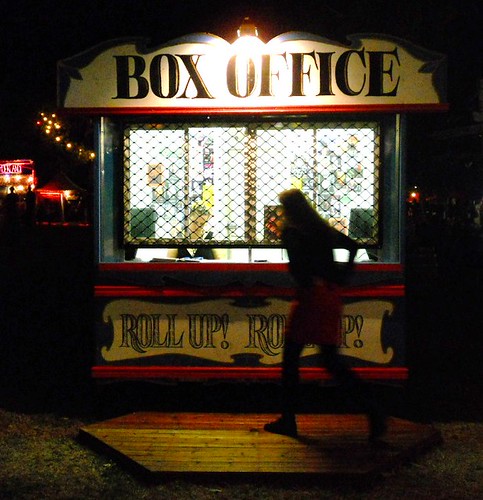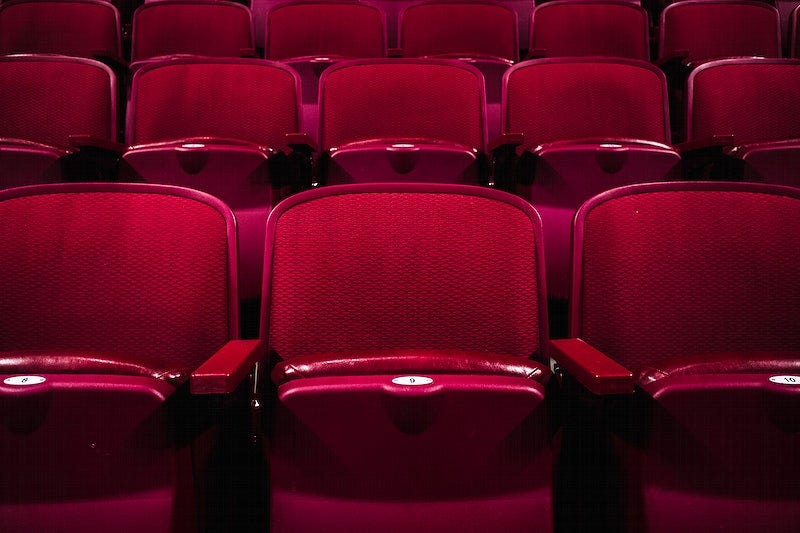
Going to the movies, right? It’s like this magical portal where we all get to escape reality for a few hours, laugh till our sides hurt, gasp in unison, or even shed a tear with a room full of strangers. It’s a shared experience, a communal dive into epic storytelling, and honestly, one of the best ways to spend an evening. We’re all in it together, right? United by the big screen, the smell of popcorn, and the thrill of a new release.
But let’s be real. Sometimes, that magical portal feels a little less “Narnia” and a lot more “jungle,” thanks to a few, shall we say, *enthusiastic* fellow adventurers who forgot their manners at home. You know the ones. The ones who make you wonder if they’ve ever actually *been* to a movie theater before, or if they think the rules of civilized society just vanish once the lights dim. It’s not about being a killjoy; it’s about making sure everyone gets to enjoy the film they paid good money to see.
Because good manners, as etiquette expert Elaine Swann puts it, are crucial to ensure “a pleasant experience for everyone around you.” They “prevent distractions, so viewers—who have, after all, paid for this experience—can fully enjoy the film.” So, are you ready to unmask some of the biggest movie theater etiquette sins that can turn a blockbuster night into a total bust? Let’s dive into the first six offenders and make sure you’re not accidentally committing one!

1. **The Late Arrival & Disruptive Entry**
Picture this: You’ve settled in, popcorn in hand, ready for the trailers to suck you into the cinematic universe. The lights dim, the opening credits roll, and then… *THUD, THUD, THUD* as someone stumbles down the aisle, flashlight-app-blazing, chatting loudly with their friends. Ugh, the ultimate buzzkill! Arriving late isn’t just a minor inconvenience; it’s a full-blown disruption that can yank everyone out of the immersive experience they came for.
Elaine Swann emphasizes that “Arriving late disrupts the viewing experience for those who are already settled in.” It’s not just about you missing the start; it’s about potentially causing others to “miss crucial parts of the film, negatively impacting everyone’s enjoyment.” Think about it: trying to find your seat in the dark, fumbling with concessions, and blocking views is a triple threat of annoyance. That precious quiet before the main feature? Gone in a flash.
So, how early should you actually go to the movies? Luckily, most theaters give you a buffer. Showtimes usually account for commercials and trailers, which can run up to 20 minutes before the actual feature film starts. This generous window is your golden ticket to arriving at the auditorium, finding your seats, and grabbing those essential snacks without creating a chaotic entrance or “annoying everyone by walking in after the lights go down.”
If you’re eyeing a blockbuster that’s sure to pack the house, especially if you have reserved seats, aim to show up about 20 minutes beforehand. This gives you ample time to locate your spot, get comfortable, and avoid rushing or pushing through crowds. Remember, entering the theater quietly and choosing your seat respectfully, “without pushing, running, jumping, or talking loudly,” sets a positive tone for everyone, including yourself.
Read more about: The ’70s Riddle: Unpacking 14 Global Disruptions That Halted Imports at Ports of Entry
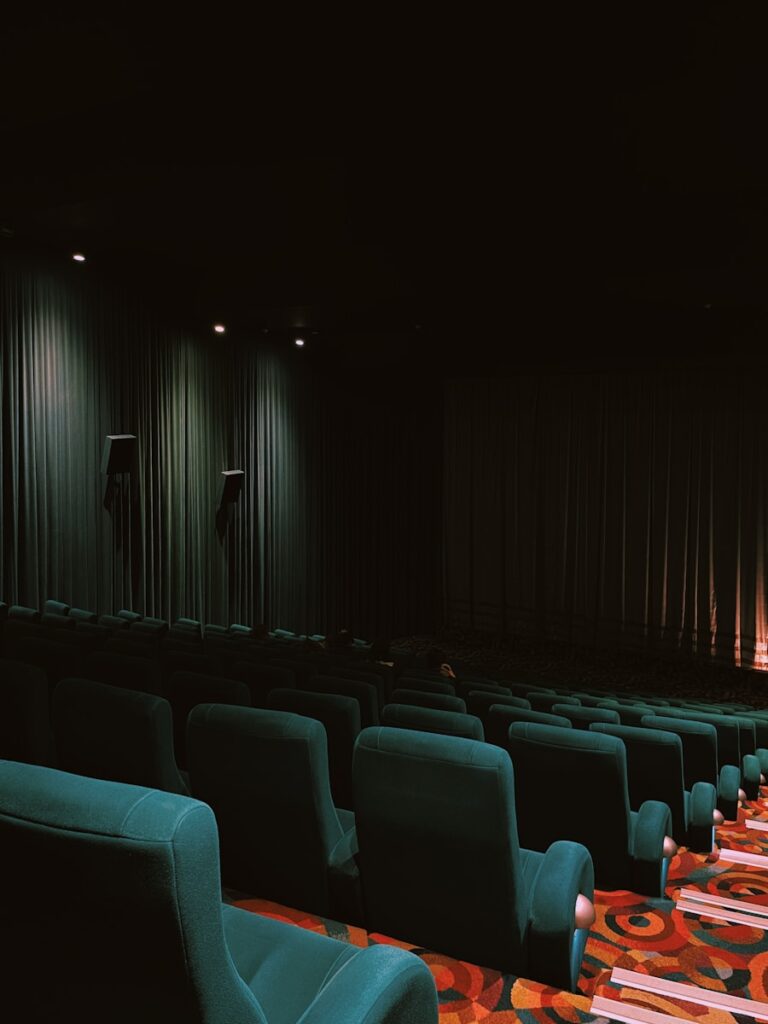
2. **The Glaring Phone Faux Pas**
In this hyper-connected world, our phones are practically extensions of ourselves. But in the sacred space of a movie theater, they transform from helpful tools into instruments of pure irritation. There’s a universal understanding that using your phone during a film is incredibly rude, yet the “movie theater chatterboxes” and texters still manage to exist, dimming the collective enjoyment with their glowing screens and intrusive alerts.
National etiquette expert Diane Gottsman gives us the straight talk: “Best to keep phones completely out of sight because even when they are on silent, the light can be distracting.” That flickering glow, even if no sound is made, acts like a beacon of annoyance, pulling eyes away from the grand spectacle on screen. It’s not just about the noise; it’s the visual pollution that breaks the spell for everyone around you, sitting next to or behind you.
The context explicitly calls this out as “one of the biggest behavior faux pas you can make during a movie.” The light from your screen, it stresses, “can be incredibly irritating to the other movie goers.” So, before the previews even start, take that extra second to ensure your mobile phone is turned completely off or at the very least, on silent mode and tucked away. If you absolutely *must* check it, like a parent waiting for a babysitter’s call, Gottsman advises to “check on the screen… and then leave the movie to make the call back.”
Stepping out of the theater to check your phone ensures that its light doesn’t pull focus from the film and your ringtone doesn’t pierce the quiet of a pivotal scene. It’s a simple act of consideration that speaks volumes about your respect for the shared experience. Let’s make sure our phones stay silent and unseen, allowing the only light in the auditorium to come from the silver screen itself.
Read more about: Beyond the Shine: Unmasking 8 Seriously Annoying Car Features and Design Trends You’ll Encounter Today

3. **The Unstoppable Chatterbox & Commentary King/Queen**
We all have thoughts, opinions, and maybe even a burning desire to share our encyclopedic knowledge of that one actress in the background. But a movie theater, especially during the film, is not the place for your personal live commentary. There’s nothing quite like being fully engrossed in a suspenseful moment only to have it shattered by a whispered (or not-so-whispered) conversation or someone predicting the plot twist aloud.
“Don’t talk during the movie,” the experts implore, because “The sound of your voice may disturb other patrons who are trying to listen to the movie.” It’s about more than just hearing; it’s about *experiencing*. That collective gasp or cheer is part of the magic, but your running dialogue, even in hushed tones, robs others of their chance to form their own connection with the story. “Bear in mind that the audience is here for the movie itself, not for your commentary,” one source directly states, reminding us to “Save discussions and opinions for after the film has ended.”
While some might argue that “Hollywood would be dead without it because moviemakers need to know how to improve,” that critical analysis is best saved for post-credits discussions. When audiences are seeing a movie for the first time, your unsolicited insights are not only “distracting, but it doesn’t allow other people to form their own thoughts.” Instead, make mental notes of your theories and criticisms. If they’re still fresh in your mind once the credits roll, then by all means, share away with your pals.
And what if you *absolutely* have to make a comment? If it’s truly urgent, ensure you “speak in a quiet whisper.” But honestly, most things can wait. The goal is to maintain the harmony of the shared space. Keep your voice down, resist the urge to spill your thoughts, and let everyone—including you—immerse themselves in the film without the soundtrack of human chatter.
4. **The Snack Attack Symphony**
Ah, movie snacks! They’re an integral part of the experience, the crunchy, chewy, sweet, and salty companions to our cinematic journeys. But there’s a fine line between enjoying your treats and inadvertently turning your consumption into a one-person symphony of disruption. “If you must snack during a performance, take extra care not to let the whole theater know you are eating,” cautions etiquette expert Laura Windsor. Because let’s be real, “Nobody wants to hear you munching, crunching, chewing your food, crinkling your way through a bag of crisps, sucking the last dregs of your soda from a straw or shaking the ice in your drink.”
Seriously, have you ever been *that* person whose M&M’s crackle echoed through a silent, romantic scene? “The couple is about to have their first kiss, the tension is building in the scene… but your new “friend” in the seat next to you just can’t wait another minute to open his/her M&M’s. Suddenly, you can’t focus on anything but the crackle of the plastic. Boom. There goes the illusion of action in the movie…,” one article perfectly illustrates. It’s a classic faux pas. To avoid this, “wait until there’s a change in action on screen or the music turns up a notch” to unleash your candy wrappers. This strategic snacking helps you dodge those annoyed glares.
And let’s not forget the sensory overload. Beyond the noise, strong-smelling foods can be equally off-putting. While popcorn’s aroma is practically synonymous with moviegoing, bringing in something with a potent odor, like a full meal, can significantly detract from the experience for those around you. “Avoid bringing in meals that have potent odors, as these can be off-putting to others,” the wisdom goes. Even gum can be a nuisance if not chewed discreetly; ensure you “chew with your mouth closed, and certainly don’t blow bubbles.”
Finally, a quick note on the snack line itself: “Make your decision before reaching the counter to keep the line moving.” This seemingly small act of preparation actually helps everyone, especially parents with hesitant children, get their goodies efficiently. And when it comes to disposal? Never, ever stick gum “under a seat or seat rest.” Instead, wrap it up and dispose of it properly in a trash can. Be a considerate snacker, and everyone wins!
Read more about: 14 Iconic Pop Culture Characters Hollywood Dared to Recast – The Good, The Bad, and The Totally Unnoticed!
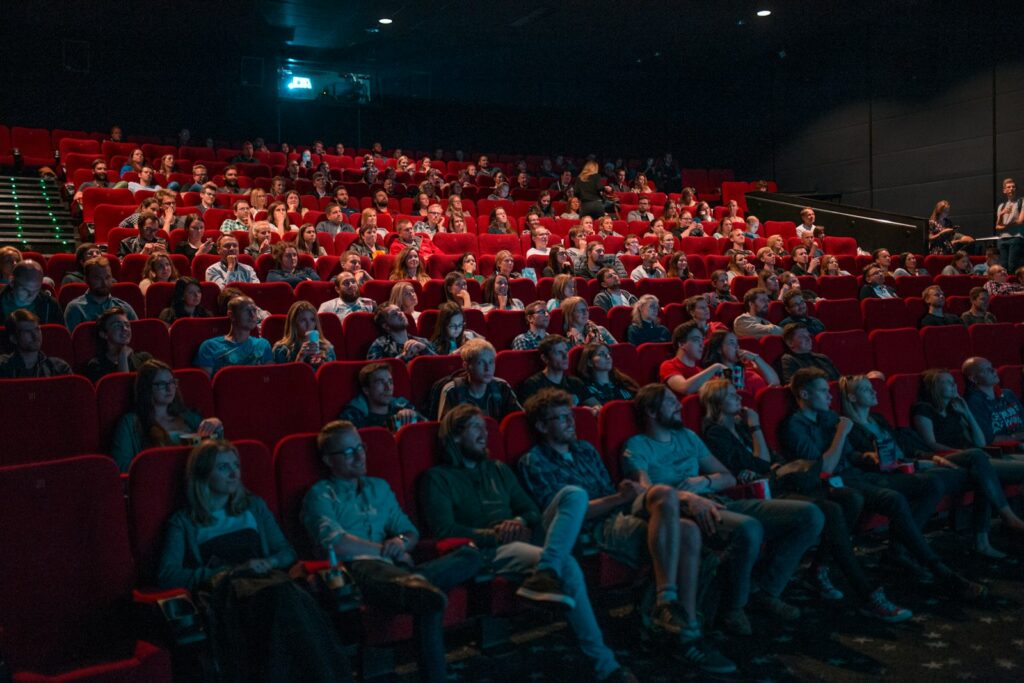
5. **The Seat Kicker & Space Invader**
Ever been so engrossed in a movie that you physically jump, not from a jump scare, but because someone behind you has decided your seat is their personal kick drum? Or perhaps you’ve found yourself in an unspoken armrest battle with a stranger, each vying for that precious communal territory. These aren’t just minor irritations; they’re classic movie theater etiquette sins that can ruin your ability to relax and enjoy the show.
“Constantly kicking or tapping the seat in front of you can be very annoying for the person sitting there.” It’s a simple truth. The solution? “Be mindful of your legroom and keep your feet firmly on the floor or footrest.” If you’re a long-legged individual who genuinely needs more space, consider booking an aisle seat. This small adjustment respects others’ personal space and helps maintain a pleasant environment for everyone.
Then there’s the armrest dilemma. When the auditorium is full, sharing is caring, but it can get tricky. Diane Gottsman wisely suggests, “Watch the body language of the guest next to you. There is not a right or wrong way; you just don’t want to take over both sides.” While it’s rude to claim both armrests and cup holders, if your neighbor removes their arm for a few minutes, you can temporarily claim it. The key is respectful awareness and avoiding sprawling or letting your personal items spill into someone else’s space.
Beyond just kicking and armrest disputes, invading personal space can also include leaning over shared armrests or letting your belongings—like coats and bags—sprawl into neighboring seats. It’s all about being “aware of others’ comfort” in a crowded space. And for the ultimate comfort rule, Gottsman reminds us that patrons “should neither remove their shoes nor rest their feet on other seats.” Let’s all agree: everyone deserves their own personal bubble of cinematic peace.
Read more about: You Won’t Believe How Gross These 14 Common Household Items Actually Are: Your Ultimate Germ Hotspot Guide!
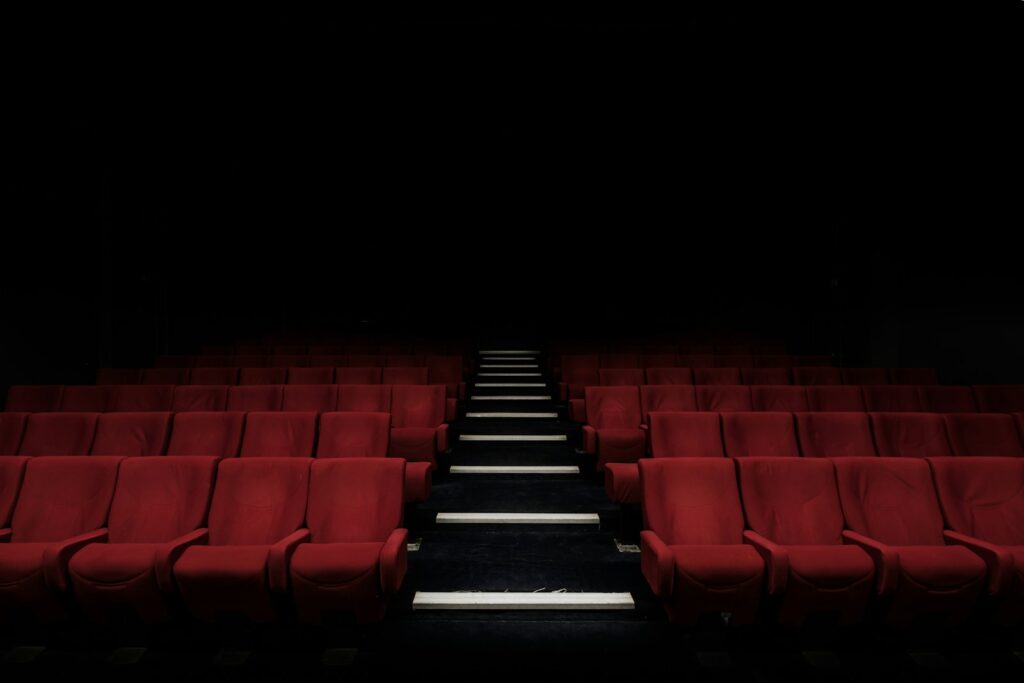
6. **The Phantom Seat Saver**
Ah, the classic Friday night movie conundrum: finding a good seat. This becomes infinitely more stressful when you encounter rows of seemingly empty seats, adorned with jackets or popcorn buckets, being held hostage for friends who may or may not ever arrive. While a quick seat-save for someone making a dash to the restroom or concession stand is generally understood, extending this courtesy too broadly becomes a major etiquette misstep.
As Diane Gottsman clearly states, it’s “poor movie theater etiquette to save a whole row in a good spot.” The general rule of thumb is that “Seats are generally available on a first come, first serve basis.” Holding a prime spot for chronically late friends over those who showed up on time is not only inconsiderate but also downright rude. “Those who are prompt should be rewarded,” Gottsman champions, advocating for fairness.
So, what’s the timeline for these saved seats? “When it gets close to starting time and your friends have not arrived, let the seats go for people who are waiting to sit down,” is the straightforward advice. It’s just “common sense” not to monopolize choice seats for absent parties. If you’re a small group and a couple of people are momentarily in the lobby, saving their spots for a few minutes is acceptable. But a whole row? That’s a no-go.
Luckily, modern solutions exist! “Many theaters allow you to reserve seats ahead of time.” This means if your friends are perpetually behind schedule, they can simply purchase their specific seats when buying their tickets earlier in the day. No more frantic seat-saving, no more awkward conversations with other patrons, and no more leaving early arrivals scrambling for less-than-ideal spots. It’s a win-win for everyone involved, ensuring a smoother, more respectful seating process for all moviegoers.
Alright, so we’ve covered the immediate, in-your-face disruptions that can turn a cinematic dream into a nightmare. But hold up, buttercup, because the etiquette journey doesn’t end there! Now, let’s dive into six *more* significant violations that chip away at the broader community respect and theater harmony. These are the ones that, if we’re honest, we probably all need a little refresher on. It’s about making sure the magic is alive and well for every single person who steps into that darkened room, from the first frame to the very last credit. Ready to unmask some more? Let’s go!
Read more about: Rolling on Those 12 Affordable Scooters? Here’s What Traffic Cops Secretly Think About You.
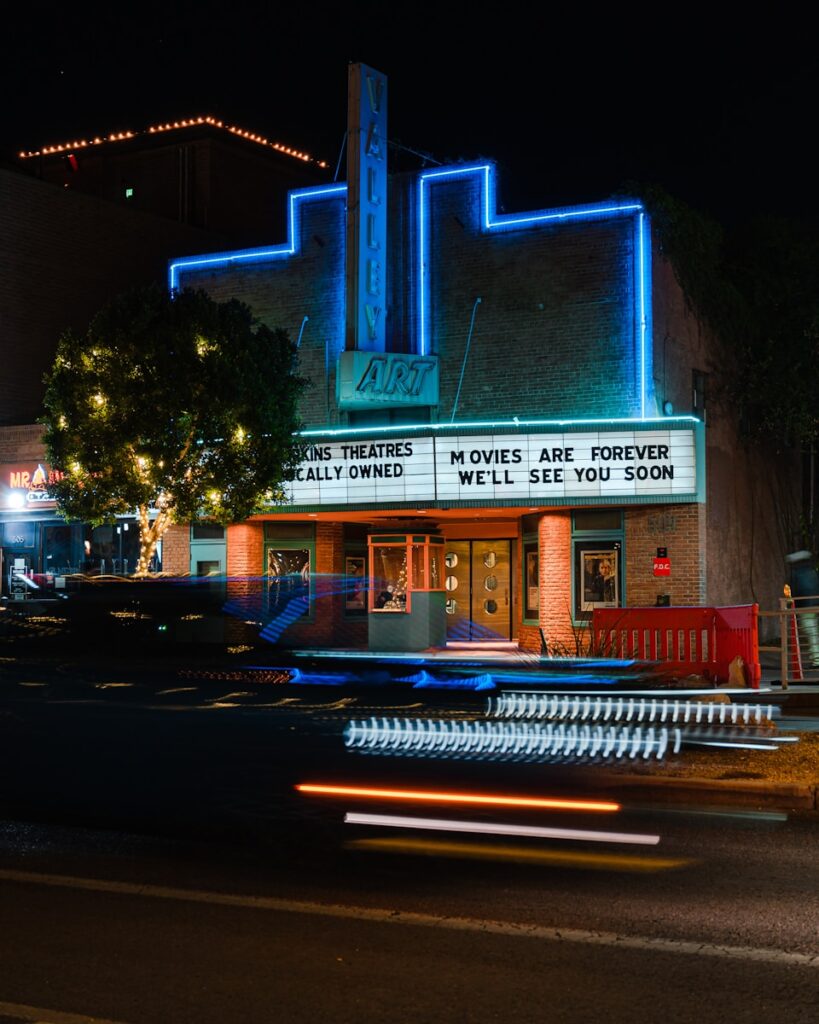
7. **The Confrontational Viewer (or Not Handling Disruptions Wisely)**
It’s the worst, isn’t it? You’re trying to enjoy your movie, and someone else is absolutely crushing the vibe with their rude behavior. Whether it’s a non-stop chatterbox or a persistent seat-kicker, the frustration can build, making you want to unleash your inner superhero (or villain, depending on your mood). But here’s the thing: sometimes, the ‘sin’ isn’t just *their* disruption, but *our* reaction to it. How you choose to handle these annoyances can either restore peace or turn a minor nuisance into an awkward showdown, making you, unwittingly, part of the problem.
National etiquette expert Diane Gottsman, bless her heart, gives us the real talk here: “Ask yourself if you really want to get involved.” She explains that “Chances are, the person who is rudely talking or texting is not very sensitive and he/she may not respond to you with courtesy.” So, while your blood might be boiling, directly confronting someone might not achieve the serene cinematic experience you’re craving. In fact, it could just ignite an argument, transforming your night out into a full-blown public dispute. And nobody paid for *that* kind of drama, right?
So, what’s a peace-loving moviegoer to do? Gottsman offers a few golden solutions: “Contact the management and let them handle it. Change seats if possible, or talk to the manager about getting your tickets refunded and go to another show.” Yes, it’s a bit of a bummer to have to move or even leave, but consider the alternative: stewing in anger, engaging in a potentially fruitless argument, and letting someone else completely ruin your mood. It’s about picking your battles and prioritizing your own peace of mind, even if it means a slight inconvenience.
Remember, your main mission is to soak in the cinematic experience, not become an impromptu bouncer. Taking the high road, either by seeking assistance from staff or relocating, ensures that you protect your own movie magic and maintain the harmony of the shared space. It’s an act of self-preservation and community consideration all rolled into one, keeping the focus on the film and not the friction.
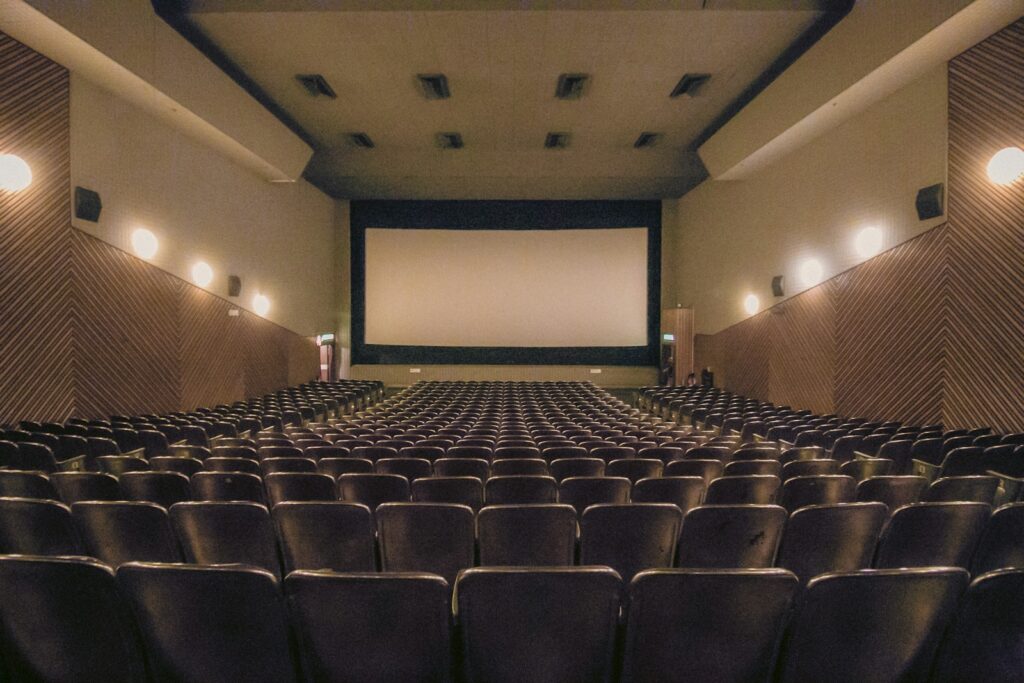
8. **The Mid-Movie Marathoner**
Ah, the call of nature! It’s one of life’s undeniable truths, and sometimes, a two-and-a-half-hour blockbuster just can’t wait. No judgment here; bathroom breaks are occasionally inevitable. The real etiquette sin, however, isn’t the *need* to go, but *how* you embark on your mid-movie journey. Picture it: someone clambering over a dozen people, blocking views, and making more noise than the actual movie villain. Suddenly, the immersive world on screen is replaced by a human obstacle course.
If you suspect you’ll be making a pit stop, a little foresight goes a long way. Gottsman sagely advises: “choose a seat on the aisle so you won’t disrupt other moviegoers.” This small act of planning can save a whole row of people from having their view momentarily eclipsed by your silhouette. And when you do make your move, remember to “duck down as you leave the theater so you don’t block anyone’s view, and quickly exit and re-enter the theater.” The goal is to be a ninja, not a spotlight hog.
Another pro-tip from Gottsman: “When you have to go, you have to go! But just like we tell our children, it’s always best to go the restroom before you sit in the middle of a crowded aisle.” And for a truly considerate exit, she recommends “facing the person you are crossing over, rather than giving them your backside.” It’s a subtle but significant gesture of respect. And for those with tiny bladders, there’s even a smartphone app called RunPee that can tell you the best time to take a break without missing pivotal scenes – just remember to check it *before* the movie starts, because phones stay off once the lights dim!
The bottom line? Your bathroom break doesn’t have to be a major production. A little planning, a dash of discretion, and a commitment to being as invisible as possible can ensure that your personal needs don’t become a public nuisance. It’s about respecting the collective immersion and making sure everyone else gets to enjoy their paid experience without unwanted interruptions.

9. **The Unchecked Kids (Babies and Beyond)**
Let’s be honest: babies are adorable, a tiny bundle of joy and wonder! But in a movie theater, they can transform into tiny, squalling disruption machines. While it might seem like a fun family outing, bringing a baby to a loud, dark cinema is not just rude to the audience, it’s also probably not the best experience for your little one. The sheer volume and sudden shifts in sound can easily startle them, leading to an inevitable chorus of cries that no amount of shushing can quiet.
Elaine Swann gets straight to the point: “If you do bring a baby, check if the theater has a crying room where you can take the baby if needed.” This is crucial advice. The loud nature of modern theaters means a startled baby is almost a guaranteed “squalling baby.” Why sacrifice your enjoyment of the film, and everyone else’s, if you’re constantly attending to a restless infant? It’s often wiser to find a babysitter and let the adults enjoy their escape into cinema without added stress.
And it’s not just about babies! The “sin” extends to bringing older children who might not be ready for the movie experience or, more importantly, not actively managing their behavior. As the experts imply, if you bring children to the theater, “ensure they understand the rules of etiquette.” Kids, bless their hearts, sometimes struggle to sit still or stay quiet, so choosing age-appropriate movies to keep them engaged and actively monitoring their behavior is absolutely essential to ensure they “don’t disturb other patrons.”
Remember film critics Mark Kermode and Simon Mayo’s sharp criticism of “irresponsible” parents “using the cinema as a babysitter”? They were onto something. Taking young children to films they have no interest in seeing is a surefire way to introduce fidgeting, talking, and general chaos into the auditorium. Movie theaters are shared spaces, and ensuring children contribute positively, or at least neutrally, to that environment is a vital aspect of community respect.

10. **The Post-Credits Pile**
The credits roll, the lights come up, and you emerge from the cinematic trance feeling refreshed and inspired. You stretch, grab your bag, and head for the exit… but wait! What did you leave behind? Is your seating area a delightful explosion of empty popcorn bags, sticky soda cups, and discarded candy wrappers? Because, my friend, if it is, you’re guilty of the post-credits pile sin. It’s an easy mistake to make, but it’s a majorly disrespectful one.
Diane Gottsman doesn’t mince words: “The movie theater is a public place, and similar to how you would behave in other public spaces, you wouldn’t toss a piece of trash on the floor in a bank lobby or at a wedding or church service.” Exactly! We’d never dream of doing that in other venues, so why do we sometimes treat movie theaters like giant, self-cleaning trash cans? Leaving empty candy boxes, greasy popcorn bags, and emptied soda containers is, quite frankly, “disrespectful and immature.”
It’s true that clean-up crews swoop in after every movie. But those dedicated staff members “have limited time to get the theater ready for the next showing.” They’re working against the clock to ensure the next wave of moviegoers has a clean, pleasant experience. By taking a moment to gather your trash and dispose of it properly in a bin on your way out, “you are treating the movie theater staff with respect,” and making their demanding job just a little bit easier.
And here’s an insider tip: if you accidentally spill something slick or sticky on the floor, especially in the dark, it’s not just messy—it’s a potential hazard! Gottsman advises that “it’s polite to let the manager know so they can make sure and clean it between shows.” Being a considerate patron means not only cleaning up your own mess but also being proactive about anything that could affect others’ safety or enjoyment. A little goes a long way in making everyone’s day, including your own!
Read more about: The Super Mario Galaxy Movie: Unpacking the Official Title, Cast, Plot Hints, and What’s Next for Nintendo’s Cinematic Universe
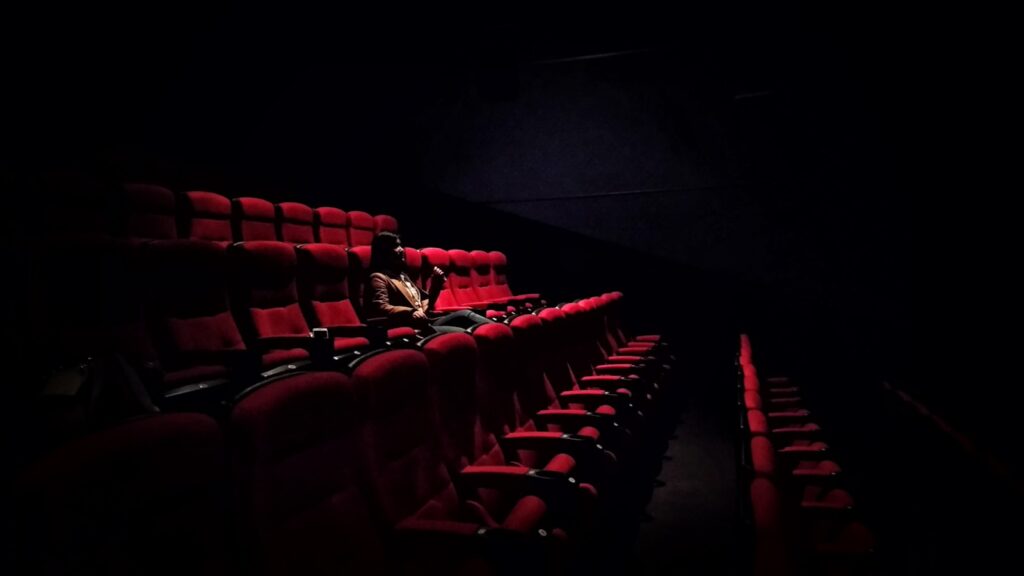
11. **The Premature Exiter**
That final dramatic scene has played out, the suspense is released, and the credits begin to roll. And just like that, it’s a mass exodus! You might be tempted to jump up and beat the crowd to the parking lot, but hold on a sec. The premature exiter—the one who bolts for the door before the lights even come on—is committing a subtle but impactful sin against fellow moviegoers and even the filmmakers themselves.
For starters, unless it’s a genuine emergency, Gottsman suggests, “wait until the lights have turned on before standing up.” Why? Because it’s a simple act of “respect to other movie goers who are still watching the screen.” When you stand up while the room is still dim and people are absorbing the film’s denouement, you’re not just blocking their view, you’re breaking their immersion in those final moments. It’s also “safer as you can easily see where you’re walking,” preventing any awkward stumbles or accidental jostles.
But wait, there’s more! Remember all those times you heard about a secret scene *after* the credits? Many films now include post-credit stingers or extra scenes that are an integral part of the overall experience. Leaving early means you might miss out on these delightful surprises, which are often Easter eggs or teases for future installments. Staying seated until the very end isn’t just about courtesy; it “shows respect for the filmmakers’ work” and their desire to deliver a complete story.
So, take a deep breath, stretch in your seat, and let the credits roll. It’s a small pause that makes a big difference. It ensures that those around you can fully absorb the film’s conclusion, allows you to catch any hidden gems, and contributes to the respectful, shared atmosphere that makes moviegoing so special. The race to the car can wait a few extra minutes; the cinematic experience, in its entirety, cannot.
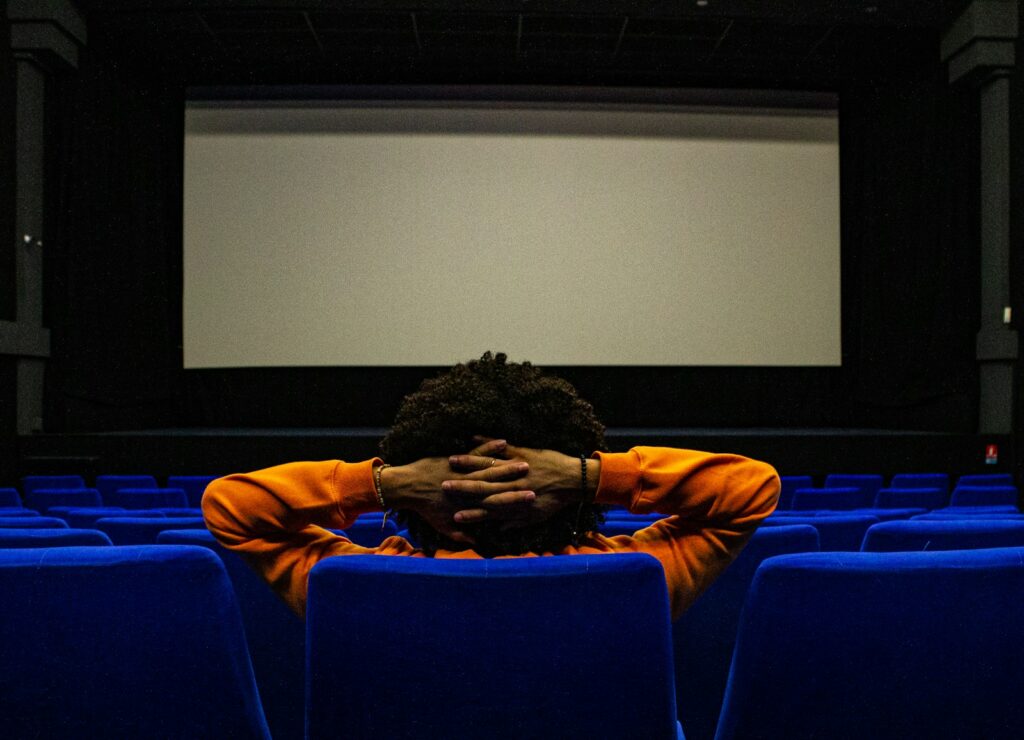
12. **The Disrespectful Patron (Staff & Rules)**
We’ve talked about phone rules, snack etiquette, and how to keep your feet in check. But let’s zoom out for a second and consider the bigger picture: how we treat the movie theater as an institution and, crucially, the people who keep it running. The ultimate etiquette sin, one that underlies many others, is a general lack of respect for the staff and the rules designed to ensure everyone has a good time. This isn’t just about fellow viewers; it’s about the entire ecosystem of the cinema.
“Treat movie theater staff with respect,” one set of guidelines reminds us. This isn’t just some fluffy suggestion; it “applies to all interactions including purchasing tickets, buying snacks and drinks at the concession stand, and acknowledging cleaning staff as you exit the theater at the end of the movie.” Think about it: these are the folks making your experience possible, from selling you that buttery popcorn to cleaning up after the latest blockbuster. How you interact with them is a direct “reflection of your own maturity” and sets the tone for the entire establishment.
Beyond just personal interactions, there are the theater’s own specific guidelines. “Each theater may have its own set of guidelines, so be sure to follow them.” These aren’t arbitrary rules; they exist for a reason, often to enhance safety, maintain order, or respond to unique circumstances (like specific seating arrangements or even mask mandates, depending on the times!). Adhering to these rules helps ensure a smooth and enjoyable experience for everyone, reinforcing the idea of a shared, respectful community. The Alamo Drafthouse, for example, is famous for strictly enforcing its code, even using an irate customer’s complaint about being ejected as part of their marketing – proving that rules are there for a reason, and they mean business!
Ultimately, a trip to the movies is a privilege, a chance to escape and be entertained. By embracing a mindset of respect for both the people and the place, you’re not just avoiding a “sin” – you’re actively contributing to a positive, welcoming environment for everyone. It’s about being a conscious consumer and a kind human, ensuring that the magic of the movies continues to thrive for all of us.
So, there you have it, movie fans! We’ve unmasked 12 of the most common theater etiquette sins that can quickly turn a cinematic escape into a communal cringe-fest. From the moment you step into the lobby to the final flick of the credits, your behavior shapes not just your own experience, but everyone else’s too. It’s about remembering that while we all crave that individual immersion, we’re sharing a space, a story, and a momentary escape with a room full of strangers. Let’s make that shared journey as epic and distraction-free as the blockbusters we came to see. Go forth, be mindful, and let’s keep the movie magic alive and kicking for every single film lover out there! Because honestly, we all deserve the best possible big-screen experience, every single time. Happy moviegoing, everyone!


